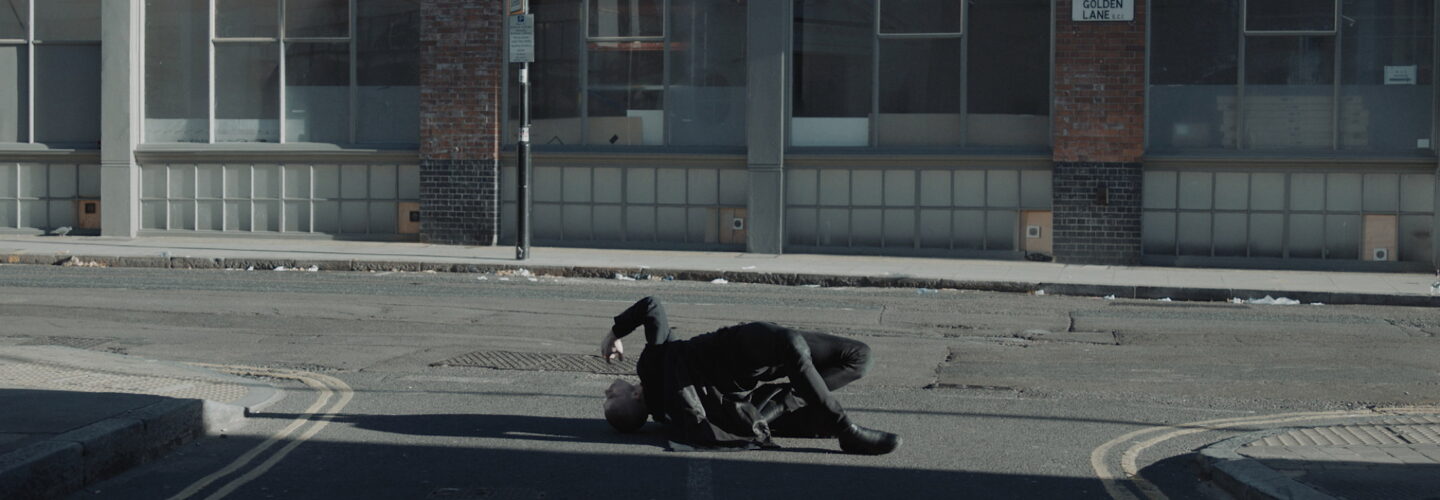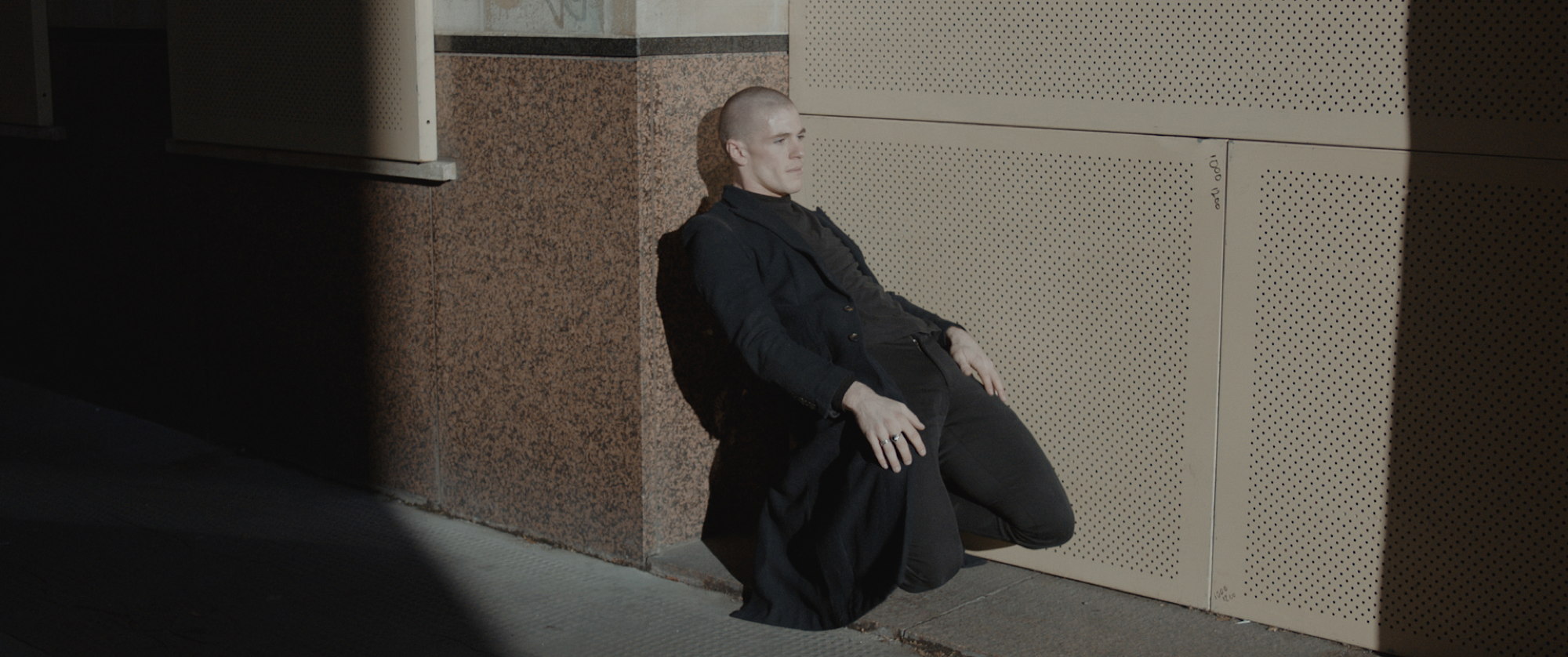
Made in collaboration with dancer Jordan Robson, Bertil Nilsson’s experimental short Fragments, invites us to reconsider the nature of private performance by transposing it onto the unexpected canvas of east London’s cold and empty streets. Captivated by this recontextualisation of contemplation and movement, we asked Bertil to reveal how he established an improvised synchronicity with his dancer and repurposed an old eyeglass lens to create the film’s practical in-camera distortion effects.
I can’t remember exactly how the first impulse to create this film came to me, but I had worked previously with dancer and movement director Jordan Robson on a couple of stills projects and I was keen to work with him again. Jordan has a look that is traditionally associated with masculinity, with strong cheekbones and a buzz cut, but the way he moves is very gentle and fluid and I was inspired by that contrast.
I did not have a script or clear story in mind when starting the process. I wanted to use an experimental process of discovery which I frequently do both in my film work and especially so in my photography. The collaborative aspect of going through the process of creation together is important to me both to reveal something authentic but also unexpected beyond what I could’ve initially imagined.
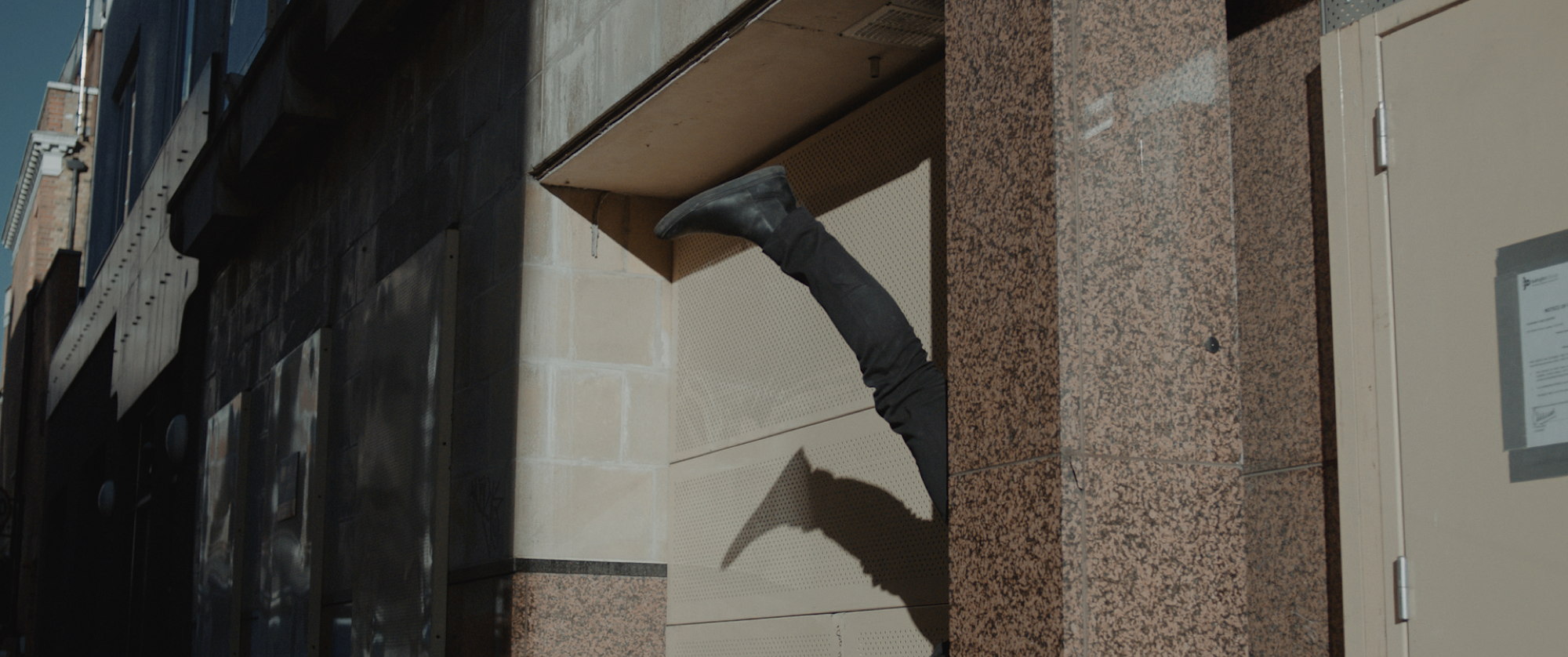
I really enjoy creating work that is on the line between documentary and narrative. Conceptually I imagined the film as portrait of Jordan, starting in reality but evolving through incorporating my ideas and my interpretation into partially a work of fiction. I took things in a darker and moodier direction which I’m definitely inclined to do.
I wanted to use an experimental process of discovery.
The other theme that formed the structure of the film and how it was created, was the idea of performance and how it is transformed between private and public space. In the cold and empty urban spaces, we are invited to a private performance through the exclusion of other people. In contrast, in private a different performance is partially revealed through a soft distorted lens.
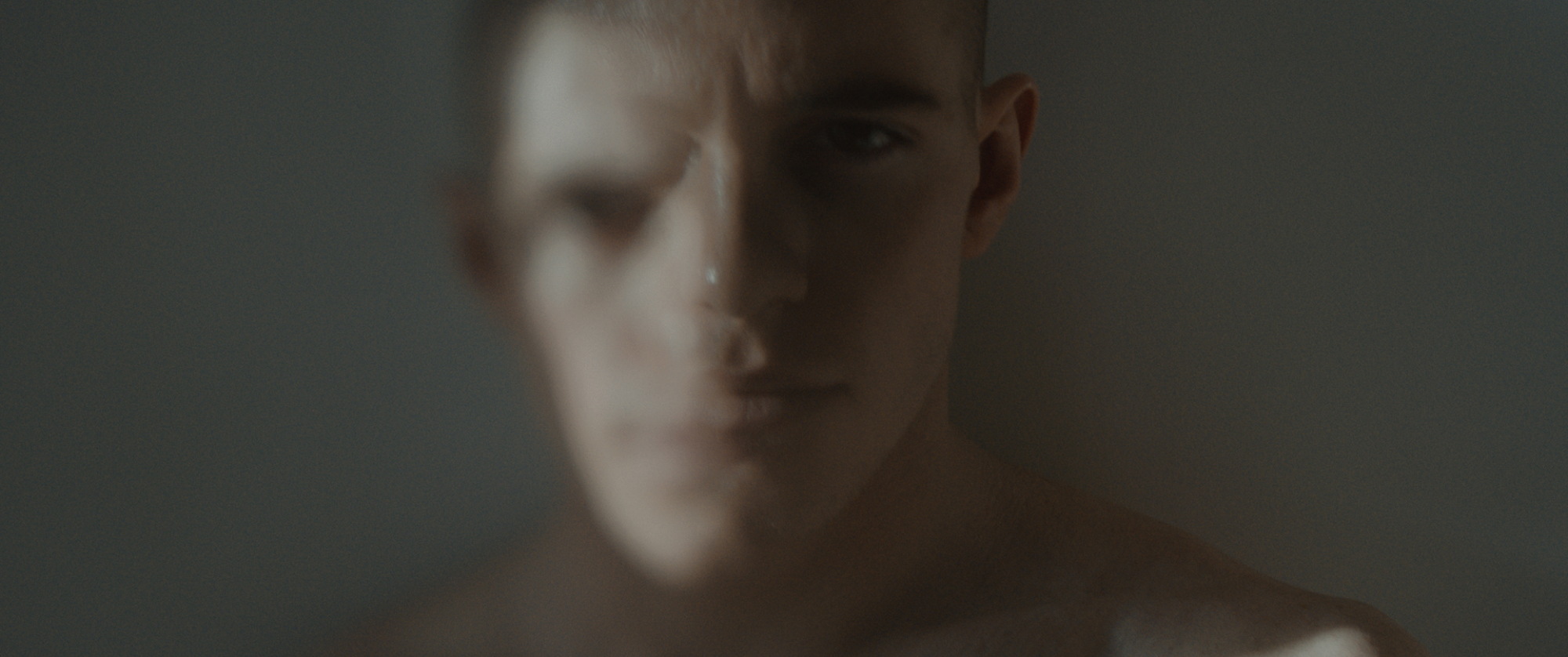
I had recently been inspired by the work of Bruno Aveillan and it made sense to use some optical techniques to organically obscure those interior shots with an impressionistic feeling. It is really hard to capture something authentically intimate as private moments and feelings are always distorted through the interpretation of lens. Adding this physical and unpredictable way to distort the footage was really interesting to try to communicate that idea in a captivating way.
In pre-production I spent some time scouting locations that had an empty feel and was naturally drawn to the Brutalist icon that is the Barbican Estate, where I have shot many times previously. Another important consideration in choosing locations and making a plan for the shoot was where the shadows would fall throughout the day. I wanted Jordan to be able to move between shadow and light in the shot, and to frame up shots with a strong silhouette.
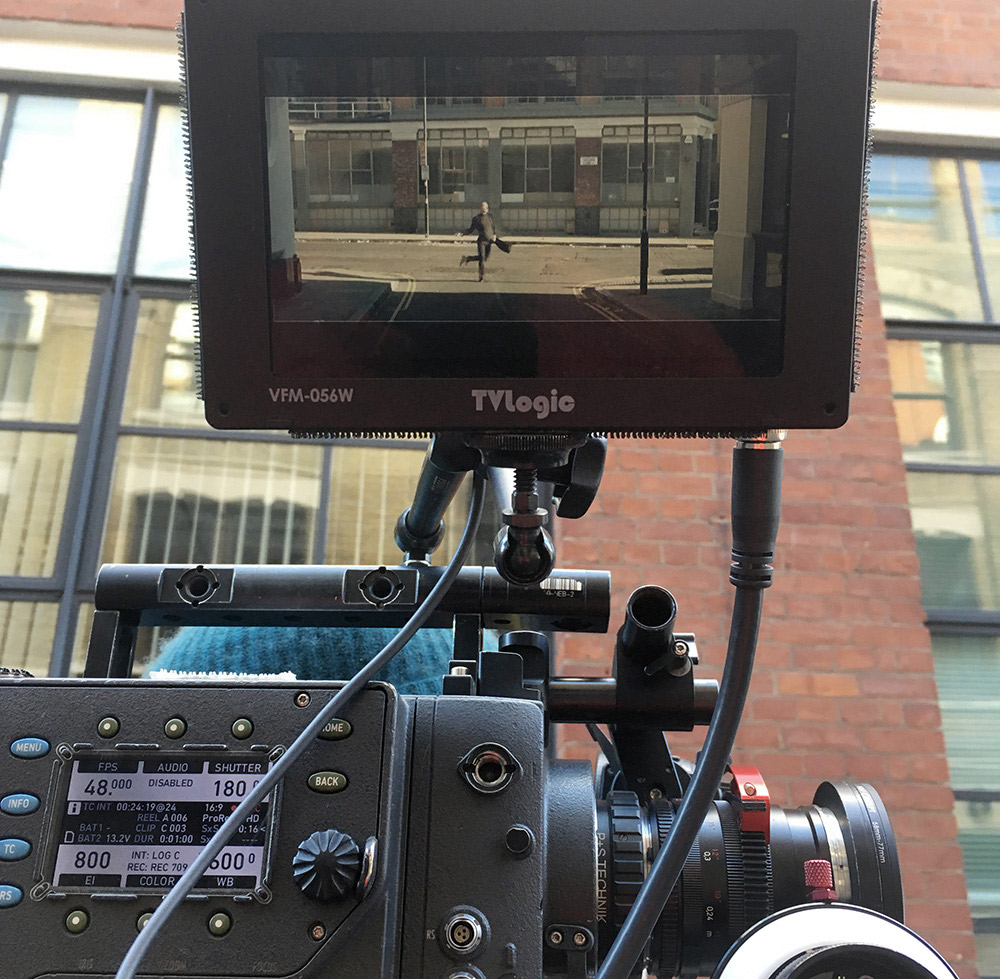
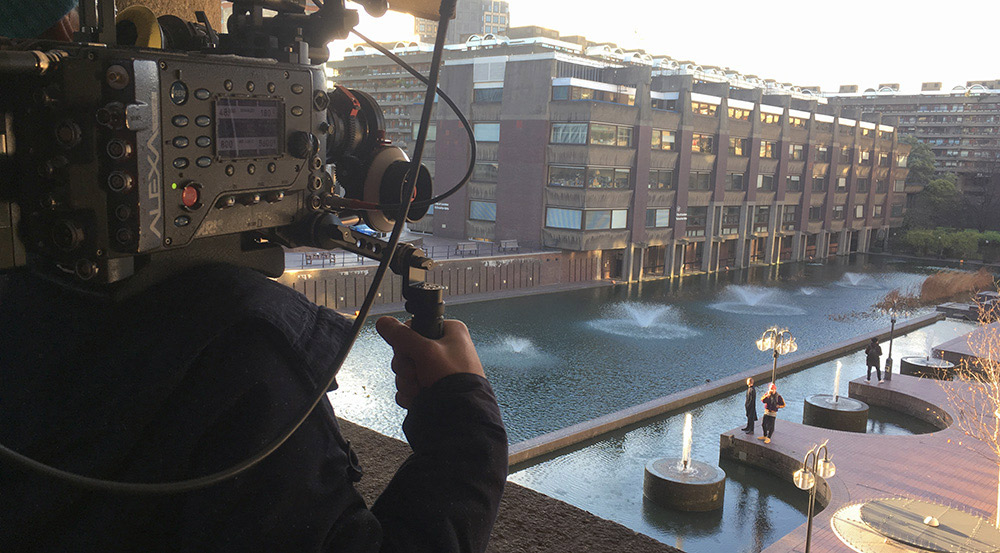
We shot on ARRI Alexa with Zeiss ZF lenses, which I know very well as I use them for all my photography. Two days with Jordan, one for the day exteriors and one for the interior shots. Jordan did a masterful job of improvising movement in response to each of the locations and where and how the light was falling.
I created the optical distortions for the interior shots experimenting with various lenses and pieces of glass that held I held directly front of the camera while recording. It required me and Jordan to really get in tune, as his movement, the movement of the camera and exact placement (and sometimes movement) of the distortion had to line up for the shot to work.
I shot the flower shots separately at my house (don’t try this at home!) later on. One of the main challenges with the fire shots was igniting the lighter fluid before it dripped from the flowers. I went through at least 20 lilies to get the shots that I wanted.

I recorded an interview with Jordan where we talked about a range of topics – dancing, art, flowers, the nature of beauty and living in London. My intention was originally to use fragments of audio from the interview in the actual film alongside with the images. What we talked about instead drove the edit and how I interpreted the visual material (for instance, the flower shots were shot after the interview).
I took things in a darker and moodier direction which I’m definitely inclined to do.
As is often the case when I’m shooting experimentally and with improvised movement, it took a while to find the right feeling and rhythm of the edit. Through the edit process, I become a kind of post factum choreographer stringing together movement phrases into sequences that flow. I worked on it on and off over a number of months in between traveling and other projects.

I found Angel, our brilliant Sound Designer, through a personal recommendation quite late in the process. I knew that I wanted to capture the feeling of space and not overwhelm the film with sound (or indeed any music). After watching an initial edit, Angel and I were quickly on the same page on in terms of direction and I was happy for him to follow his creative impulses. The first draft from Angel really hit the mark and immediately elevated the whole film. From there it was fairly quick process of back and forth to arrive at a final edit.
At the end of the post production process, I actually asked Jordan to come and record some more voice snippets to better fit the final edit. There is an alternate sound edit with his voice, but in the end I made the (very difficult) decision to go with the version without any talking and keep things more abstract.

